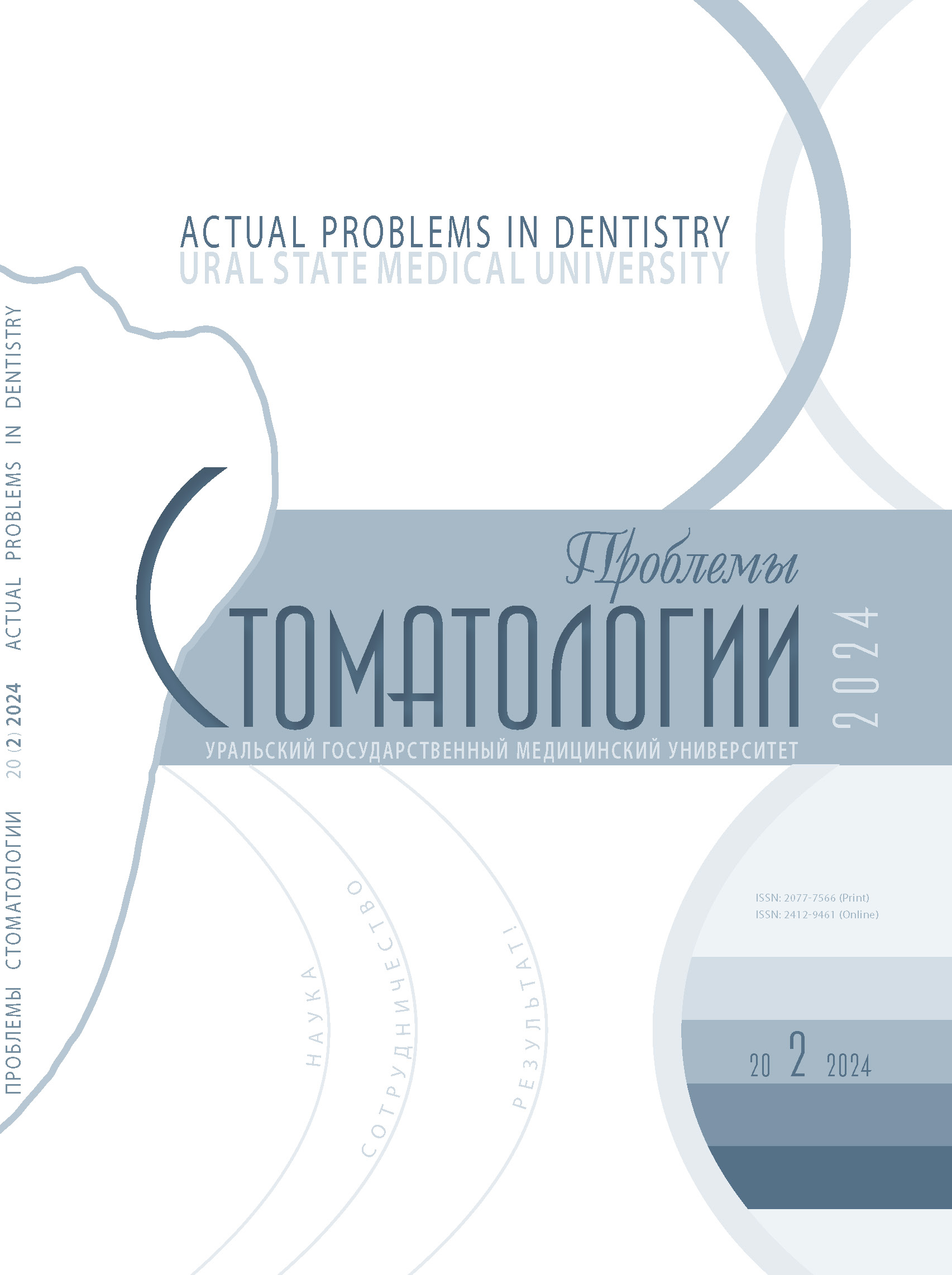Stavropol, Stavropol, Russian Federation
Stavropol, Russian Federation
Stavropol, Stavropol, Russian Federation
Stavropol', Stavropol, Russian Federation
UDC 616.31
The relevance. Bone is an organic mineral composite with a complex structure. Bone modeling for different experiments also involves different design and application of loads. The applied additive technologies, in conjunction with the necessary equipment, help to recreate the structural features of the jaw bones in order to study the future implantation or position of the orthopedic structure. Digital dentistry is not always able to simulate all the biological nuances, in such cases models and templates made in advance by 3D printing from a material with similar strength characteristics come to the rescue. The aim of the study is to evaluate the strength properties of natural bone tissue using the example of the lower jaw of a ram with further modeling of bone from a material with similar strength characteristics. Materials and methods. The objects of the study were selected samples of the mandible of a laboratory animal, as well as imitation models made of 3D printing material by photopolymer deposition in the form of cubes, simulating the cortical and spongy structures of bone tissue. The test samples were placed in the screw holder of the universal GOTECH Al 7000S testing machine with the determination of the stress and load limit of the mandibular imitation models simulating bone tissue, pre-printed on a 3D printer with certain parameters such as the density of the layers, their number, the type of polymer material from which they were made, obtaining similar models jaws made of selected materials and comparison of their characteristics with the biological object of study. Results. The determination of the optimal material obtained using the photopolymer printing method made it possible to obtain the most effective and similar in characteristics to bone tissue model suitable for a more detailed study of the behavior of bone tissue, which allows using this material as a phantom material in determining load protocols. Conclusion. Quantitative results of stress tests make it possible to predict the strength results of a real bone, while not spending time and material resources on identifying and predicting risks.
bone modeling, spongy bone, cortical bone, 3D printing, bone strength, additive technologies
1. Hlusov I.A., Pichugin V.F., Surmeneva M.A., Surmenev R.A. Osnovy biomehaniki biosovmestimyh materialov i biologicheskih tkaney. Uchebnoe posobie (pererabotannoe i dopolnennoe). Tomsk : Izdatel'stvo Tomskogo politehnicheskogo universiteta. 2023:163. [I.A. Khlusov, V.F. Pichugin, M.A. Surmeneva, R.A. Surmenev. Fundamentals of biomechanics of biocompatible materials and biological tissues. A textbook (revised and supplemented). Tomsk : Publishing House of Tomsk Polytechnic University. 2023:163. (In Russ.)]. https://portal.tpu.ru/SHARED/s/SURMENEV/rabota/%D0%A3%D1%87%D0%B5%D0%B1%D0%BD%D1%8B%D0%B5%20%D0%BF%D0%BE%D1%81%D0%BE%D0%B1%D0%B8%D1%8F%20%D0%B8%20%D0%B4%D1%80%D1%83%D0%B3%D0%B0%D1%8F%20%D0%BF%D0%BE%D0%BB%D0%B5%D0%B7%D0%BD%D0%B0/%D0%A3%D1%87%D0%B5%D0%B1%D0%BD%D0%BE%D0%B5%20%D0%BF%D0%BE%D1%81%D0%BE%D0%B1%D0%B8%D0%B5-%D0%9E%D1%81%D0%BD%D0%BE%D0%B2%D1%8B%20%D0%B1%D0%B8%D0%BE%D0%BC%D0%B5%D1%85.pdf
2. Sergeev Yu.A., Avanisyan V.M., Dolgalev A.A., Choniashvili D.Z. Vozmozhnosti primeneniya additivnyh tehnologiy pri sozdanii i razrabotke dental'nogo implantata (obzor literatury). Vestnik novyh medicinskih tehnologiy. 2023;30(4):22-26. [Yu.A. Sergeev, V.M. Avanisyan, A.A. Dolgalev, D.Z. Choniashvili. Possibilities of using additive technologies in the creation and development of a dental implant (literature review). Bulletin of new medical technologies. 2023;30(4):22-26. (In Russ.)]. https://www.elibrary.ru/item.asp?id=56941587
3. Chen P., Nikoyan L. Guided Implant Surgery: A Technique Whose Time Has Come // Dent. Clin. N. Am. – 2021;65:67-80. doi:https://doi.org/10.1016/j.cden.2020.09.005.
4. Colombo M., Mangano C., Mijiritsky E., Krebs M., Hauschild U., Fortin T. Clinical applications and effectiveness of guided implant surgery: A critical review based on randomized controlled trials // BMC Oral Health. – 2017;17:150. doi:https://doi.org/10.1186/s12903-017-0441.
5. Jaber S.T., Hajeer M.Y., Khattab T.Z., Mahaini L. Evaluation of the fused deposition modeling and the digital light processing techniques in terms of dimensional accuracy of printing dental models used for the fabrication of clear aligners // Clin. Exp. Dent. Res. – 2021;7:591-600. doi:https://doi.org/10.1002/cre2.366.
6. Minch L.E., Sarul M., Nowak R., Kawala B., Antoszewska-Smith J. Orthodontic intrusion of periodontally-compromised maxillary incisors: 3-dimensional finite element method analysis // Adv. Clin. Exp. Med. – 2017;26:829-833. doi:https://doi.org/10.17219/acem/61349.
7. Paradowska-Stolarz A., Malysa A., Mikulewicz M. Comparison of the Compression and Tensile Modulus of Two Chosen Resins Used in Dentistry for 3D Printing // Materials. – 2022;15:8956. doi:https://doi.org/10.3390/ma15248956.
8. Tack P., Victor J., Gemmel P., Annemans L. 3D-printing techniques in a medical setting: A systematic literature review // Biomed. Eng. Online. – 2016;15:115. doi:https://doi.org/10.1186/s12938-016-0236-4



















